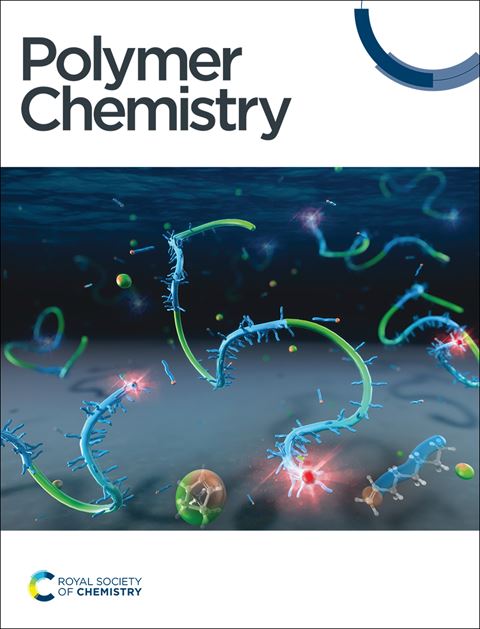Biocompatible two-dimensional platelets with tunable sizes from polycarbonate-based block copolymers
IF 4.1
2区 化学
Q2 POLYMER SCIENCE
引用次数: 0
Abstract
Two-dimensional (2D) nanoparticles have received considerable attention due to their versatile applications ranging from catalysis, optoelectronics to nanomedicine. However, it remains challenging to access size tunable flat nanostructures with spatially tailored chemistries. The seeded-growth method, “living” crystallization-driven self-assembly (CDSA) has emerged as a promising approach for preparing well-defined 1D and 2D core–shell micellar assemblies from crystallizable block copolymers (BCPs). Nevertheless, the development of biocompatible aliphatic polycarbonates, such as poly(trimethylene carbonate) (PTMC), as core-forming blocks for CDSA is considerably less explored and represents a key challenge due to their low crystallinity. Herein, we report the development of poly(dimethyltrimethylene carbonate) (PDTC) as a crystallizable core-forming block through the introduction of side chains to PTMC. The BCPs containing crystallizable PDTC were shown to undergo living CDSA to prepare uniform and size-controlled 2D platelets. In addition, uniform segmented platelets with spatially localized coronal chemistries were successfully constructed. The colloidal stability of the platelets in aqueous solution allowed for an assessment of their toxicity toward healthy WI-38 and cancerous U-87 MG cells. These studies reveal that PDTC nanostructures exhibit no discernible cytotoxicity and excellent biocompatibility, indicating great potential for biomedical applications.

求助全文
约1分钟内获得全文
求助全文
来源期刊

Polymer Chemistry
POLYMER SCIENCE-
CiteScore
8.60
自引率
8.70%
发文量
535
审稿时长
1.7 months
期刊介绍:
Polymer Chemistry welcomes submissions in all areas of polymer science that have a strong focus on macromolecular chemistry. Manuscripts may cover a broad range of fields, yet no direct application focus is required.
 求助内容:
求助内容: 应助结果提醒方式:
应助结果提醒方式:


